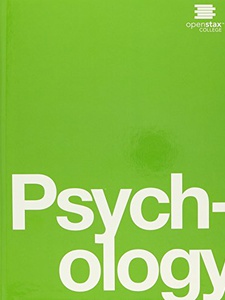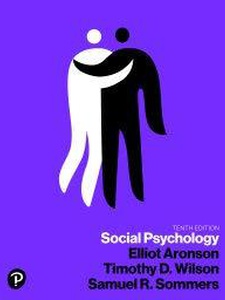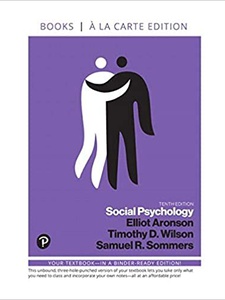Mẹo về Which of the following is one of the four key abilities of emotional intelligence quizlet? Mới Nhất
Pro đang tìm kiếm từ khóa Which of the following is one of the four key abilities of emotional intelligence quizlet? được Cập Nhật vào lúc : 2022-10-25 17:40:12 . Với phương châm chia sẻ Thủ Thuật về trong nội dung bài viết một cách Chi Tiết Mới Nhất. Nếu sau khi tìm hiểu thêm nội dung bài viết vẫn ko hiểu thì hoàn toàn có thể lại Comments ở cuối bài để Mình lý giải và hướng dẫn lại nha.
Nội dung chính Show
- What are the four key abilities of emotional intelligence?
- Which of the following is one of the abilities of emotional intelligence?
- What are the four dimensions of emotional intelligence quizlet?
- Who created the 4 pillars of emotional intelligence?
Recommended textbook solutions

Social Psychology
10th EditionElliot Aronson, Robin M. Akert, Samuel R. Sommers, Timothy D. Wilson
525 solutions

Consumer Behavior: Buying, Having, Being
13th EditionMichael R Solomon
449 solutions

Myers’ Psychology for AP
2nd EditionDavid G Myers
900
solutions

HDEV5
6th EditionSpencer A. Rathus
380 solutions
Recommended textbook solutions

Myers’ Psychology for AP
2nd EditionDavid G Myers
900
solutions

Consumer Behavior: Buying, Having, Being
13th EditionMichael R Solomon
449 solutions

Social Psychology
10th EditionElliot Aronson, Robin M. Akert, Timothy D. Wilson
525
solutions

Psychology
1st EditionArlene Lacombe, Kathryn Dumper, Rose Spielman, William Jenkins
580
solutions
Recommended textbook solutions

Consumer Behavior: Buying, Having, Being
13th EditionMichael R Solomon
449 solutions

Myers’ Psychology for the AP Course
3rd EditionC. Nathan DeWall, David G Myers
955 solutions

Social Psychology
10th EditionElliot Aronson, Robin M. Akert, Timothy D. Wilson
525
solutions

Social Psychology
10th EditionElliot Aronson, Robin M. Akert, Samuel R. Sommers, Timothy D. Wilson
525 solutions
Emotional Intelligence
(EI) refers to the ability to recognise and regulate emotions in ourselves and others (Goleman, 2001).
EI is the primary form of information that human beings process.
Definition of EI: Mayer and Salovey (1997)
The ability to perceive emotion, integrate emotion to facilitate thought, understand emotions and to regulate
emotions to promote personal growth. (Mayer & Salovey, 1997)
Emphasis is placed upon personal growth and environmental demands (survival)
Understanding oneself and others, relating to people, and adapting to and coping with the immediate surroundings to be more successful in dealing with environmental demands (Bar-On, 1997).
Salovey & Mayer: introduction to
the four branch model
1990 – first clear model of intelligence.
First to coin the term “emotional intelligence”. Proposed 4 capacities: perceiving; facilitating; understanding; and managing.
Ability models (Maltby)
Regard EI as a pure form of mental ability and his a pure intelligence.
1) Accurately perceiving emotions
2) Using emotions to facilitating
thinking
3) Understanding emotional meaning
4) Managing emotions
Accurately perceiving emotions
Facial expressions
Using emotions to facilitate thinking
Focus facilitated
Understanding emotional meaning
Happiness/ sadness
Managing emotions
Using emotional to your advantage, i.e. sad = more reflective
Four branch (ability) model of EI
Four branch model divided into two areas:
Experiential (perceiving/facilitating)
Strategic (understanding/ managing)
Each area is further divided into two branches that range from basic psychological processes to
more complex processes integrating emotion and cognition.
Driven by our personal level of ability.
Experiential
Ability to perceive, respond, and manipulate emotional information without necessarily understanding it.
Strategic
Ability to understand and manage emotions without necessarily perceiving feelings well or
fully experiencing them.
Managing branch:
Reflective regulation of emotion to promote emotional and intellectual growth.
(requires more abstract thinking)
Understanding branch:
Understanding and analysing emotions, employing emotional knowledge.
(requires more abstract thinking)
Facilitating branch:
Emotional facilitation of thinking.
(more innate)
Perceiving branch:
Perception appraisal and expression of emotion.
(more innate)
EI measure
Mayer-Salovey-Caruso Emotional Intelligence test (MSCEIT):
14 items designed for individuals 17 years of
age or older.
Aims to measure the four abilities outlined in Salovey & Mayer’s model.
Each score is expressed in terms of a standard intelligence.
An overall EIQ of 69 or less =
Considerable emotional intelligence development.
Someone scoring 130 or more =
Significant emotional intelligence
strength.
The MSCEIT
Eight individual tasks – two tasks used to measure each brand of the model.
Emotional perception is measured by asking participants to identify emotions in faces and landscapes.
Emotional understanding is measured via understanding how emotions blend.
-) tests of EI arguably subjective, i.e. happiness/surprise, overwhelmed/jittery – multiple appropriate responses.
Mixed models of EI
Combine mental ability with personality characteristics such as optimism and well-being (Mayer, 1999).
Two Mixed models of EI:
Daniel Goleman
Focuses on performance integrating an individual’s abilities and personality and applying their corresponding effects on performance in the workplace.
Two Mixed models of EI:
Reuven Bar-On
Emphasises the co-dependece of the ability aspects of EI with personality traits and their application to personal well-being.
Goleman (1995) – Most widely known model of EI
Goleman wrote ‘Emotional Intelligence’ a landmark book in ’95.
Goleman linked EI to the amygdala (part of the limbic system
involved in emotion, memory and the fight or flight response). As we develop, we learn to control the fight or flight emotions (fight or flight = central to EI).
Goleman posits that individuals are born with a general emotional intelligence that determines their potential for learning emotional competencies.
Goleman’s hierarchal structure:
1) Identification of one’s own emotional (self-awareness)
i.e.
laugh when happy/ cry when sad.
Goleman’s hierarchal structure:
2) Manage own emotions (self-regulation/ management)
Shift dealing of sadness to something (shift emotion to understand where it’s come from – i.e. sad film).
Goleman’s hierarchal structure:
3) Emotion related to achievement drive
Ability to be happy –
allowed to have a positive effect on work. Allow emotions to drive success.
Goleman’s hierarchal structure:
4) Assess and influence others’ emotions (social awareness)
Social awareness – understanding others and their emotions.
Goleman’s hierarchal structure:
5) Sustain good interpersonal relationships (social skills management)
Must manage 4 prior hierarchies; achieve components before achieving the ability to manage social relationships.
The Refining of Goleman’s model (theoretically)
Condensed into 4 aspects of emotion: self-awareness; self-regulation/managment; social awareness; and social skills/ management.
4 categories which make up EI; distinctions between personal competence and social competence, as well as
between recognition and regulation.
Combines central ideas of abilities with personal traits.
Personal Competence + Recognition
Self-Awareness
(Emotional self-awareness; accurate self-awareness; self confidence)
Social Competence + Recognition
Social Awareness
(empathy; service orientation; developing others;
leveraging diversity; political awareness)
Personal Competence + Regulation
Self-Regulation/ Management
(self-control; trustworthiness; conscientiousness; adaptability; achievement drive; initiative)
Social Competence + Regulation
Social Skills/Management
(developing others; influence; communication; conflict management;
leadership; change catalyst; building bonds; teamwork capabilities; collaboration and cooperation).
Emotional Competence Inventory (Goleman)
ECI –
Assessor asked to rate the person in terms of how characteristic they are of the abilities listed in the model.
Individuals present themselves in an assured, forceful, impressive and unhesitating manner.
ECI commonly used in the work place.
-) truly
valid? someone else’s interpretation – subjective.
Work Profile Questionnaire of Emotional Intelligence (Goleman)
WPQei –
Measures 7 competencies thought of as most essential for effective work performance.
-) truly valid? someone else’s interpretation – subjective.
Bar-On Model of EI
Advocates survival.
Routed
in biology, focused on darwinism/ theory of evolution.
Identified 5 domains: intra-personal, interpersonal, adaptability, stress management and general mood.
Bar-On Model of EI:
Domain – Intra-personal
Aspects:
-Self-regard
-Emotional/self-awareness
-Assertiveness
-Independence
-Self-actualisatoin
Bar-On Model of EI
Domain –
Interpersonal
Aspects:
-Empathy
-Social responsibility
-Interpersonal relationship
Bar-On Model of EI
Domain – Adaptability
Aspects:
-Reality testing
-Flexibility
-Problem solving
Bar-On Model of EI
Domain – Stress Management
Aspects:
-Stress
tolerance
-Impulse control
Bar-On Model of EI
Domain – General Mood
Aspects:
-Optimism
-Happiness
Bar-On Model of EI
Emotion Quotient Inventory
EQ-i –
Self report measure for individuals 16years and over.
133 items used to obtain a Total EQ (Total Emotion Quotient) and to produce five composite
scales corresponding to the 5 main components of the Bar-On model. Estimate of emotional-social intelligence.
Scores covered into standing scores (M= 100, SD = 15).
Low scores = inability to be effective in meeting daily demands/existence of social and or emotional problems.
High scores = the individual has effective emotional and social functioning.
Not a measure of personality traits or cognitive capacity.
Comparing
Ability & Mixed Models of EI:
Theoretic Similarities
Aim to understand and measure the elements involved in the recognition and regulation of one’s own emotions and the emotions of others.
All agree key components of EI.
Comparing Ability & Mixed Models of EI:
Some consensus on what these are (agreed components)
Awareness (or perception of
emotions)
Management of emotions
Comparing Ability & Mixed Models of EI:
Statistical similarities
Relationship between different subscalezs of emotional intelligence:
Similarities are significant between the regulation of emotion sub-scale of MSCEIT and the interpersonal EQ scale of the Bar-ON EQ-i (Bracket & Mayer, 2002).
Measuring EI:
Self-Report
measures (mixed models)
Extent to which a certain statement applies.
Reliance on a person’s self-understanding and self-concept.
Accurate if the person’s self-concept is accurate.
Measuring EI:
Other report measures (mixed models)
Individuals familiar with a person asked to what extent statement describes that person.
Measure of representation not true
self.
Measuring EI:
Performance Measures (ability models)
Individuals engage in a number of cognitive tasks.
Regarded as the “gold standard” for traditional intelligence.
Measures actual capacities rather than beliefs about those capacities.
Ability vs. Mixed models
Emphasis of mixed models shifts from a
focus on defining EI (ability models) to defining what makes (characteristics) a successfully emotionally intelligent person.
Key criticism of mixed models – uncertain how useful EI is for enhancing the understanding of human ability over and above what is already available, e.g. personality and general intelligence.
Ability model supporters argue that research based on ability measures has demonstrated that EI is a distinct and clearly defined construct with evidence of incremental
validity – concrete.
Key criticisms of ability models:
– fail to broaden the traditional notion of intelligence
– do not necessarily measure success in school or life – ignore personality and do not possess applicability to life. Lack ecological validity.
Neurological evidence for EI
Findings cannot tư vấn one model of EI over another.
However, do endorse the existence of a set of emotional
abilities that comprise a form of intelligence which is distinct and different from standard intelligence.
The ability to neurologically distinguish cognitive intelligence (IQ) and emotional intelligence (EI) is a significant contribution to the legitimacy of the emotional intelligence construct.
However, lack of empirical research to tư vấn the biological theoretical contexts in which Goleman and Bar-On place their models of EI.
Applicability
to Everyday Living PROS
High EI is associated with:
– Greater self-efficacy in coping situations
– Higher EI is associated with better health and psychological mental health
– Higher life satisfaction
– Higher levels of happiness
– Increased positive interpersonal relationships
– Higher levels of academic achievement across a range of subjects (maths/science/art)
(- correlations are not definitive – depict relationships
but not causality).
Applicability to Everyday Living CONS
Lower EI associated with:
– Owning more self-help books
– Higher use of illegal drugs and alcohol
– Increased participation in deviant behaviour, i.e. involvement in physical fights and vandalism.
Gender and EI
Goleman (1995) – Women’s EI:
Assertive
and expresses feelings directly.
Feels positive about oneself.
Life holds meaning.
Outgoing.
Seeks and enjoys the company of others.
Expresses feelings appropriately.
Adapts well to stress.
Rarely feels guilt or ruminates.
Gender and EI
Goleman (1995) – Men’s EI:
Outgoing and cheerful.
Not prone to fearfulness or worry.
Ability to show commitment to people
or causes.
Takes responsibility.
Has an ethical outlook.
Sympathetic and caring in relationships.
Comfortable with oneself and others.
Gender and EI
Goleman (1995)
Goleman suggests that men and women do differ.
Separate descriptors of men and women’s emotional intelligence -) however, distinctions are not as clear cut as expected.
Gender
and EI
Mayer & Salovey MSCEIT
Women have been found to score significantly higher than men – women better perception, facilitation and management.
Gender and EI
Bar-On using the EQi
Overall scores = no significant differences between men and women – 3,000 people in the sample.
Across aspects –
Females scored significantly higher on all three
aspects of interpersonal skills (empathy, social responsibly and interpersonal relationships).
Females are also more aware of their own emotions than men are.
Males score significantly higher on: self-regard; cope better with stress; more independent; solve problems better; and are more optimistic.
-) However, all but one of the effect sizes were being 0.16; the exception was empathy – effect size was just under 0.45. Small effect sizes mean that it’s hard to generalise findings,
and furthermore validity and reliability become questionable.
Gender and EI Implications
Self-fulfilling prophecy and biased evaluations (Rudman and Glick, 1999)
‘Men can’t communicate’
‘Women are bad maths’
Gender and EI Implications
Job advert – managerial post required technical skills, ability to work under pressure and ability to be
helpful and sensitive to the needs of others.
Female applicants who displayed ‘masculine’ qualities received lower hire-ability ratings than ‘masculine’ male applicants (d=0.92).
The researchers concluded that women must present themselves as competent and agentic to be hired, but they may then be viewed as interpersonally deficient and uncaring because of their violation of the female nurturance stereotype.
-) Difficult for women – must present
themselves as nurturing but also competent – bound by stereotypes.
EI enables an individual to…
…correctly exhibit suitable amounts of different emotions.
Also enables individuals to know about others’ emotions and react accordingly.
Theory development surrounding emotional intelligence is weak
May not be the
concept itself, but in the lack of consistency in how constructs are conceptualised and operationalised.
Conclusive evidence
Research exist to suggest that EI is a protecting factor against social damages and is associated with successful family, marriage, life satisfaction, as well as job and academic achievements.
Study of stereotypes breaks with the traditional
trait approach and in doing so opens up different questions:
Mapping of the complexity, conditions and implications under which those stereotypes of emotion operate.
EI and gender
Is it appropriate to ask ‘which sex is more emotional?’
Trait based approach of sex.
What are the four key abilities of emotional intelligence?
The four domains of Emotional Intelligence — self awareness, self management, social awareness, and relationship management — each can help a leader face any crisis with lower levels of stress, less emotional reactivity and fewer unintended consequences.
Which of the following is one of the abilities of emotional intelligence?
Empathy. Empathy, or the ability to understand how others are feeling, is absolutely critical to emotional intelligence.
What are the four dimensions of emotional intelligence quizlet?
First to coin the term “emotional intelligence”. Proposed 4 capacities: perceiving; facilitating; understanding; and managing.
Who created the 4 pillars of emotional intelligence?
Daniel Goleman
In this past column, he reviews the four domains of EI. Do these situations sound familiar?
Tải thêm tài liệu liên quan đến nội dung bài viết Which of the following is one of the four key abilities of emotional intelligence quizlet?




Share Link Cập nhật Which of the following is one of the four key abilities of emotional intelligence quizlet? miễn phí
Bạn vừa đọc Post Với Một số hướng dẫn một cách rõ ràng hơn về Review Which of the following is one of the four key abilities of emotional intelligence quizlet? tiên tiến và phát triển nhất và ShareLink Tải Which of the following is one of the four key abilities of emotional intelligence quizlet? miễn phí.

Giải đáp vướng mắc về Which of the following is one of the four key abilities of emotional intelligence quizlet?
Nếu sau khi đọc nội dung bài viết Which of the following is one of the four key abilities of emotional intelligence quizlet? vẫn chưa hiểu thì hoàn toàn có thể lại Comments ở cuối bài để Tác giả lý giải và hướng dẫn lại nha
#key #abilities #emotional #intelligence #quizlet